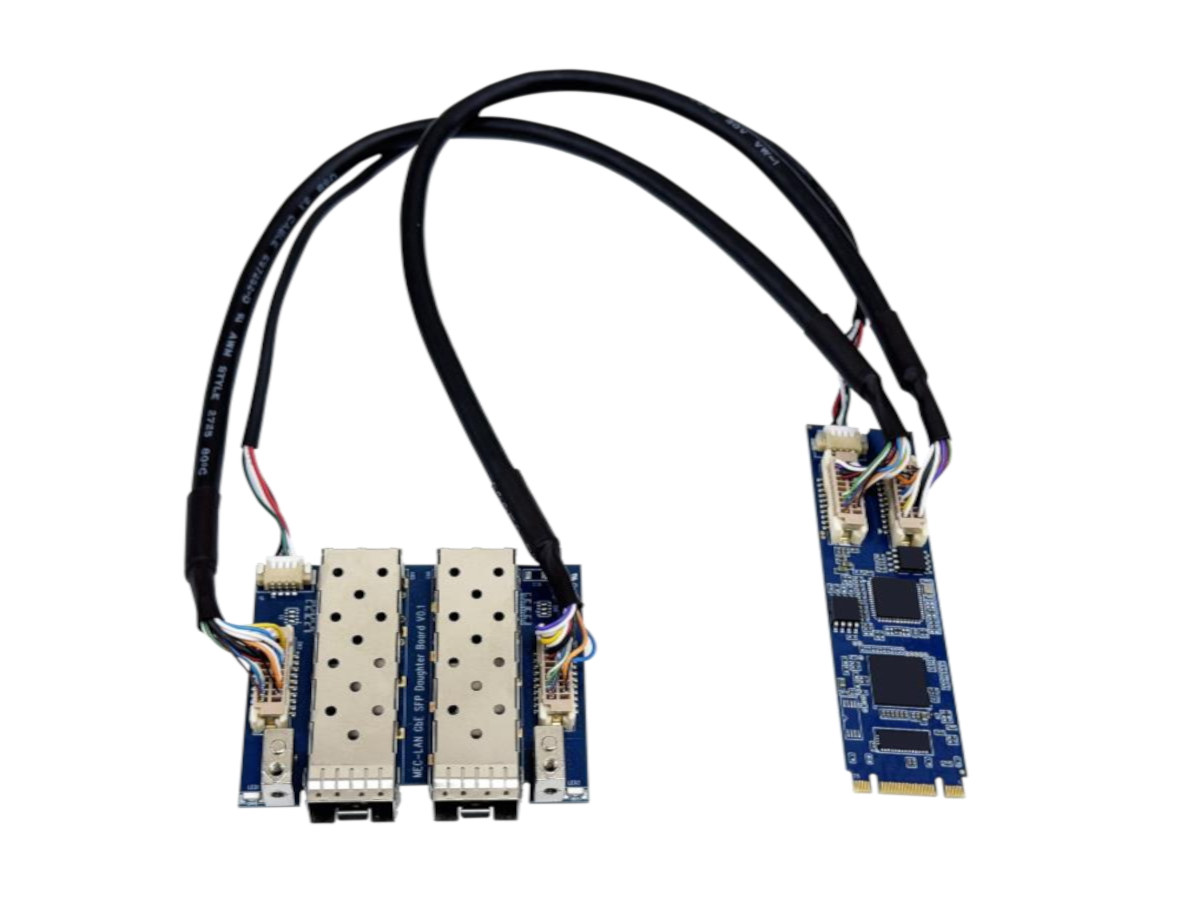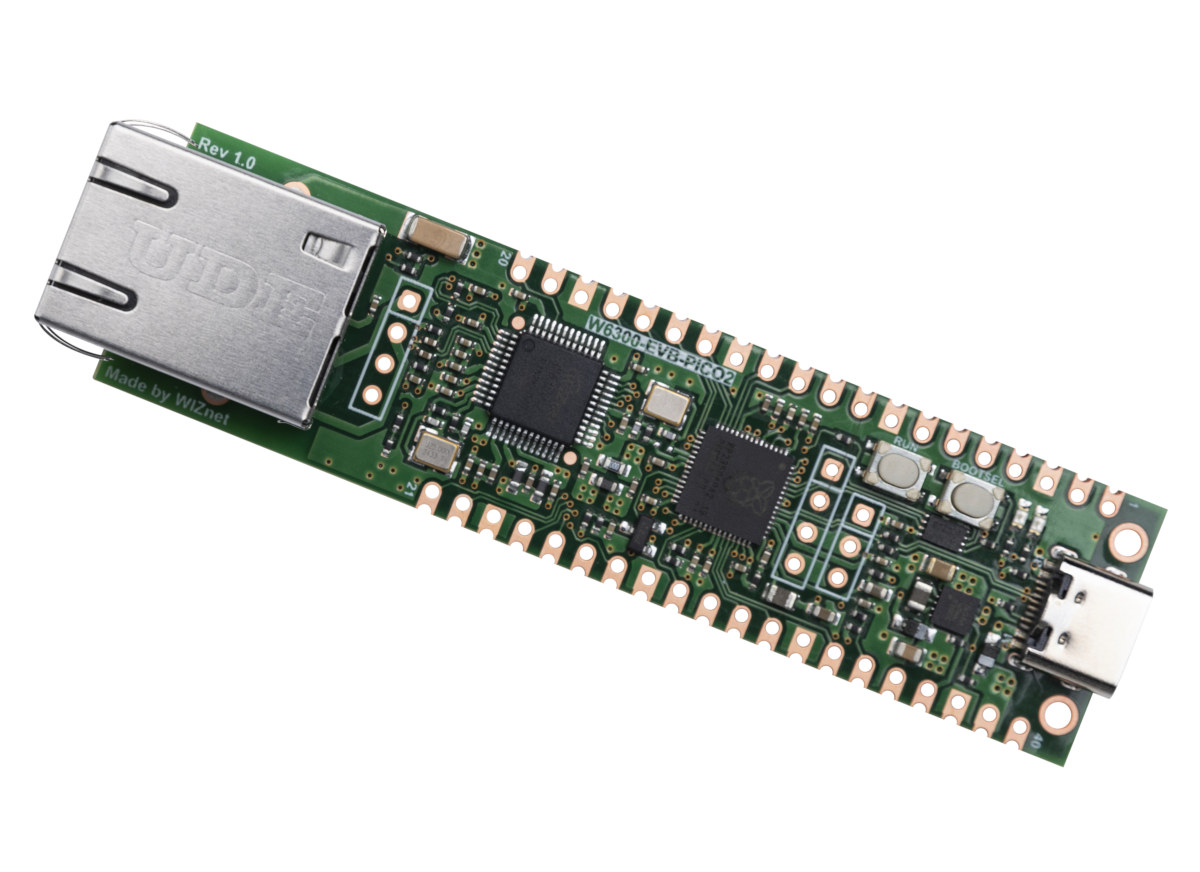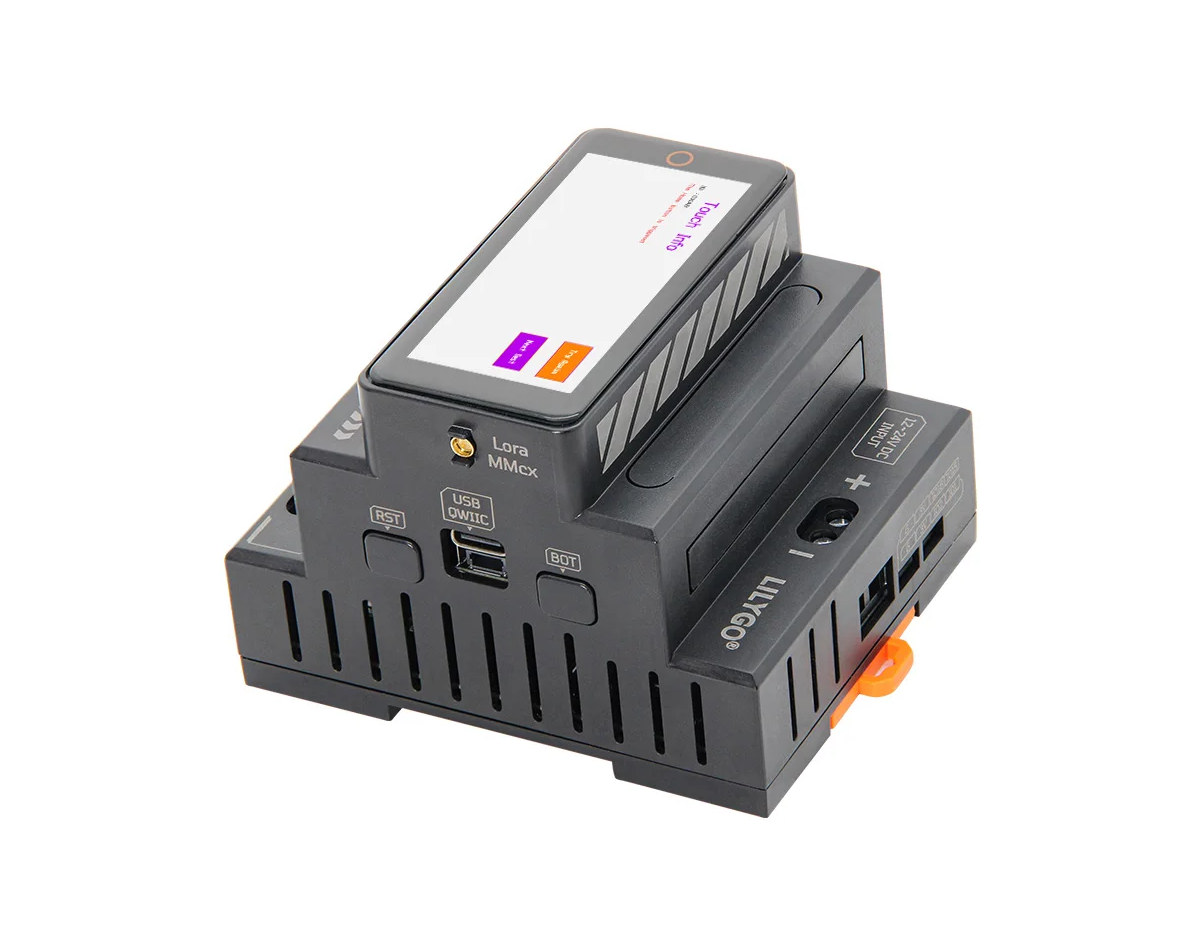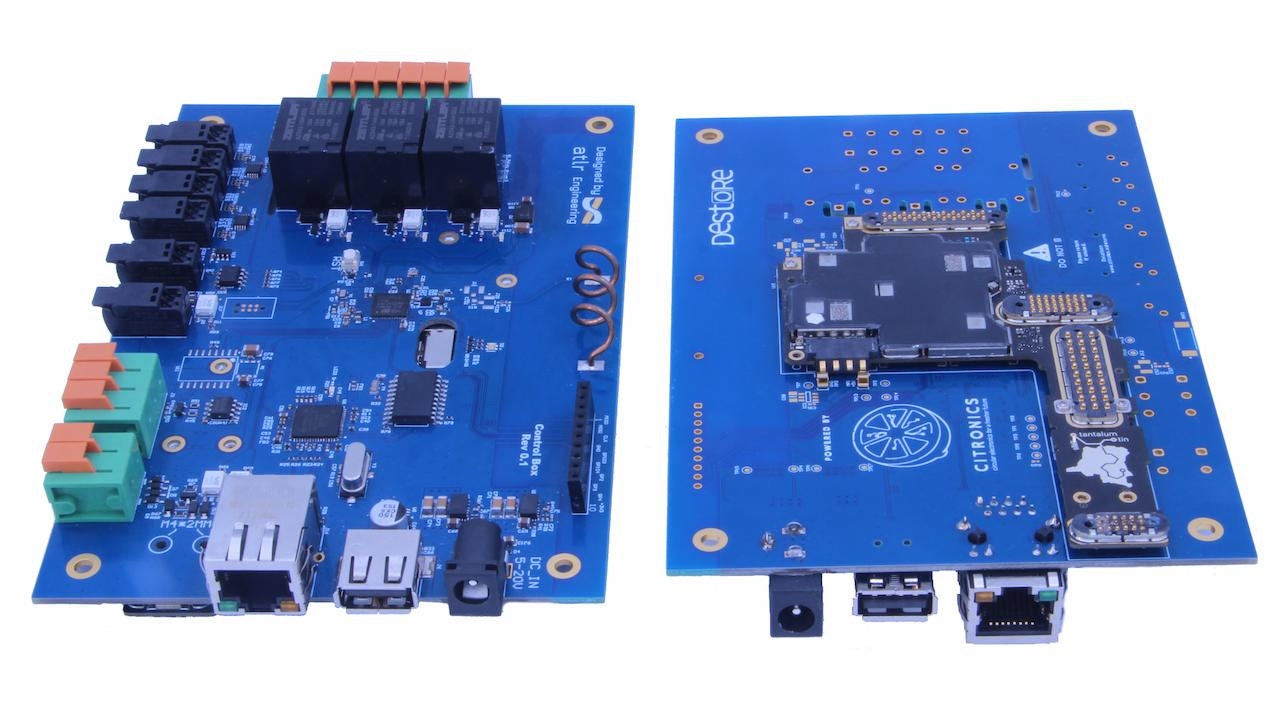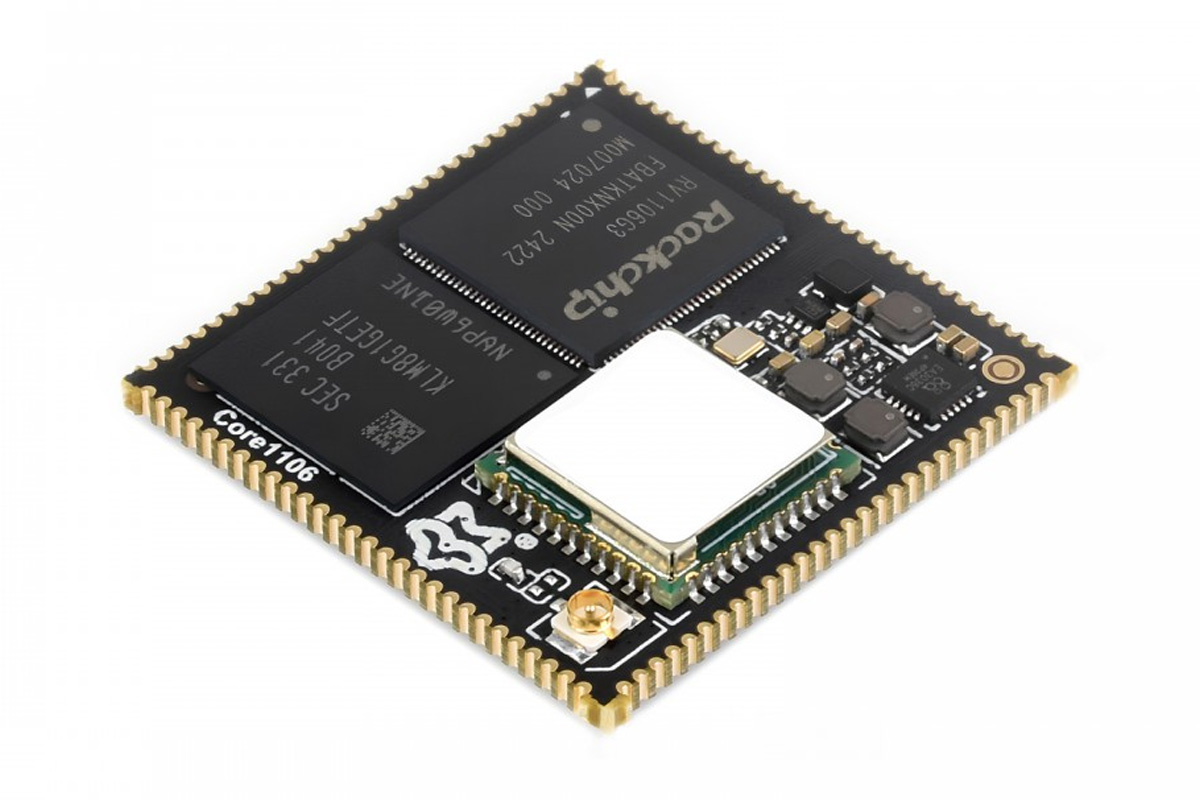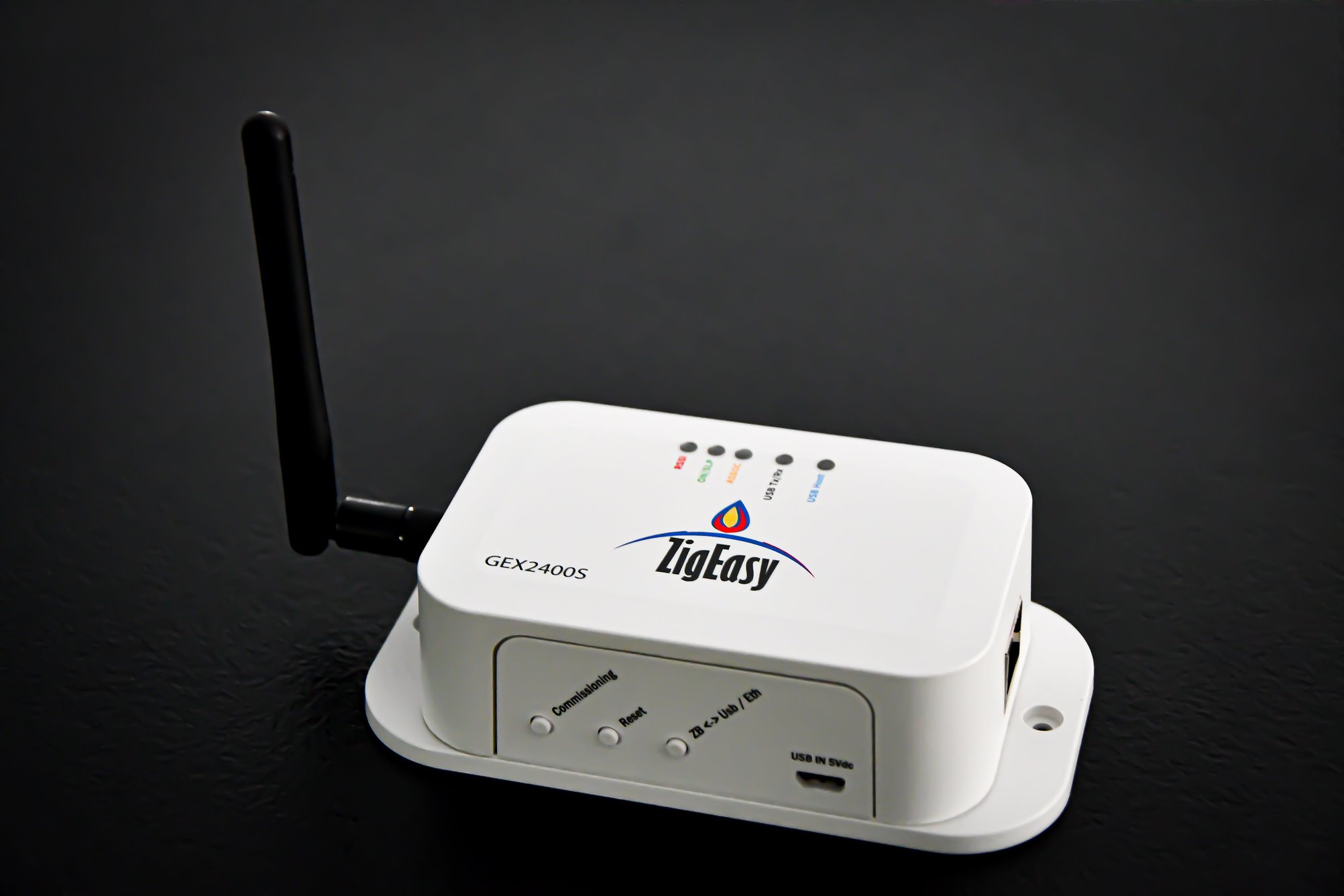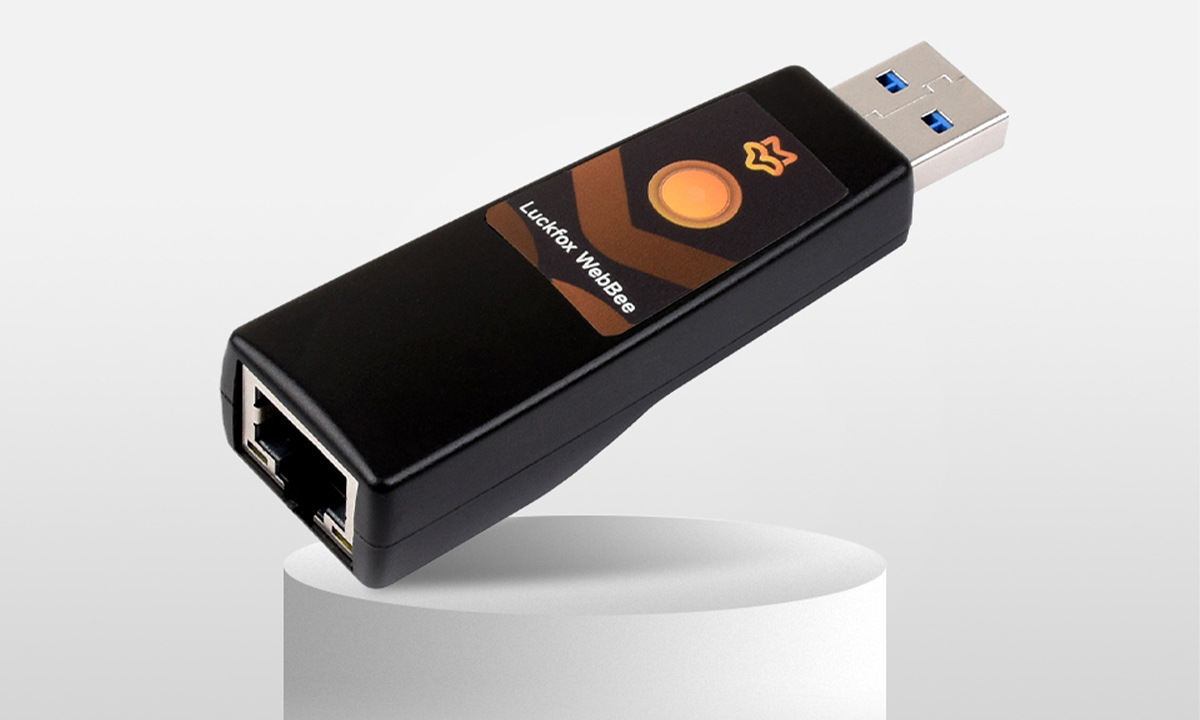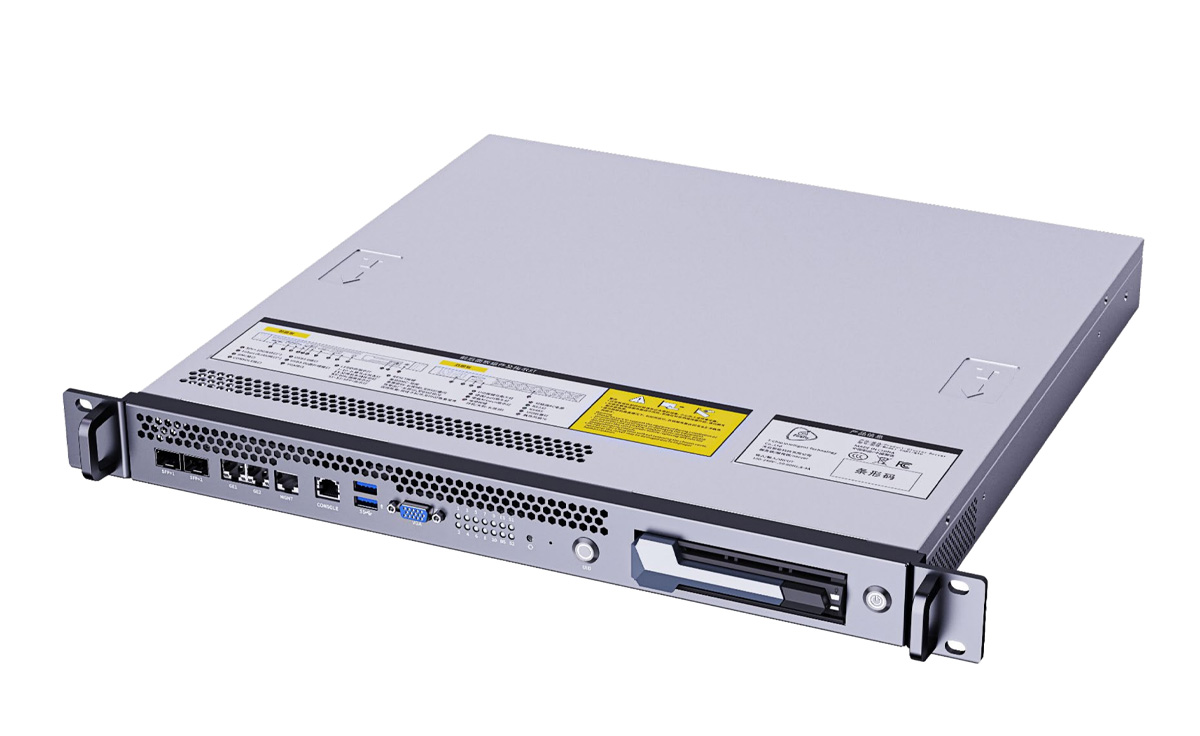Cervoz M.2 MEC-LAN-2001-SFP and MEC-LAN-2002-SFP are M.2 SFP Ethernet expansion modules delivering gigabit Ethernet speed over long distances for robotics using an Intel i210-IS controller compliant with IEEE 802.3x and 802.3z standards. Small Form-factor Pluggable (SFP/SFP+) cages are usually associated with high-speed Ethernet connections of over 10 Gbps, but another advantage of SFP cages over RJ45 jacks is that they allow for data transmission over several kilometers, while RJ45 Ethernet is typically limited to about 100 meters. The Cervoz M.2 SFP Ethernet expansion modules would allow laying out long cables in logistics centers, smart factories, transportation hubs, and energy management facilities where Autonomous Mobile Robots (AMRs) operate across long distances. Cervoz M.2 MEC-LAN-2001-SFP and MEC-LAN-2002-SFP specifications: Ethernet 1x or 2x Gigabit Ethernet connectors via Intel i210-IS controller(s) Support Wake-on-LAN and Hot-Swap function 1x or 2x SFP cages via MEC daughter board Host interface – M.2 B+M Key edge connector with […]
W6300-EVB-Pico2 board combines RP2350 MCU with WIZnet W6300 QSPI Ethernet controller for 80+ Mbps data rate
WIZnet W6300-EVB-Pico2 is a development board that combines a Raspberry Pi RP2350 MCU with the company’s new W6300 QSPI Ethernet controller capable of 80+ Mbps data rates. WIZNet has made several 10/100Mbps Ethernet controllers over the years that connect to microcontrollers via SPI, but the speed is often limited to 15 to 70 Mbps due to a low SPI clock frequency and small buffers. The WIZNet W6300 Ethernet controller can deliver higher speed thanks to a 150MHz system clock, a QSPI interface with four data lines, 64KB SRAM, and 4KB TX/RX buffer for each of the 8 sockets. W6300 QSPI Ethernet controller W6300 features and specifications: Host Interface – High-speed QSPI (MODE 0/3), system bus with 2 address signals & 8-bit data Internal 32KB SRAM for Tx/ Rx buffers (64KB in total) 8x independent sockets with 64KB Memory 10BaseT / 10BaseTe / 100BaseTX Ethernet PHY Integrated Auto negotiation (Full and […]
LILYGO T-Connect Pro industrial IoT controller offers Ethernet, WiFi, Bluetooth, LoRa, RS232, RS485, and CAN Bus
LILYGO T-Connect Pro is a DIN rail-mountable, ESP32-S3-based industrial IoT controller with Ethernet, WiFi 4, Bluetooth 5.0 LE, and LoRa connectivity, as well as CAN Bus, RS232, and RS485 interfaces. The controller also features a 2.33-inch touchscreen display, a 10A relay, a 12V to 24V DC screw terminal for power, 5V USB-C port for programming, a Qwiic connector for expansion, and BOOT and Reset buttons. LILYGO T-Connect Pro specifications: SoC – Espressif ESP32-S3R8 CPU – Dual-core Tensilica LX7 microcontroller up to 240 MHz with vector instructions for AI acceleration Memory – 8MB PSRAM Wireless – WiFi 4 and Bluetooth 5.0 LE + Mesh connectivity Storage – 16MB SPI flash Display – 2.33-inch RGB display with 480×222 resolution via ST7796 SPI display controller with touchscreen using CST226SE chip Networking 10/100Mbps Ethernet RJ45 port via W5500 4-wire SPI controller WiFi 4 and Bluetooth 5.0 LE via ESP32-S3 LoRa via HPD16A Semtech SX1262 […]
Citronics built a router based on the Fairphone 2 mainboard
Belgium-company Citronics has designed a router based on the mainboard of the Fairphone 2 smartphone, connecting the Qualcomm Snapdragon 801 “system-on-module” to a carrier board with Ethernet, USB ports, and other connectors, while leveraging 4G LTE, WiFi, and Bluetooth connectivity from the phone’s core board. Citronics calls this type of hardware “Circular Microcomputers,” which refers to small computers focusing on sustainability and circular economy principles using parts from discarded devices like old smartphones. There’s actually more than one router, as Citronics designed its own development kit, and also partnered with other companies to design custom gateways based on the Fairphone 2 mainboard. Let’s have a look at the devkit first. Citronics devkit: Fairphone 2 mainboard SoC – Qualcomm Snapdragon 801 (MSM8974AB) quad core Krait 400 processor @ up to 2.26 GHz with Adreno 330 GPU System Memory – 2 GB LPDDR3 Storage – 32GB eMMC flash Connectivity – 2G/3G/4G LTE, […]
Solderable Rockchip RV1106 system-on-module features 112 castellated pins, offers WiFi 6 and Bluetooth 5.2 connectivity
Luckfox has recently released the Core1106 Core Board Rockchip RV1106 system-on-module with a compact 30x30mm size, 112 castellated pins designed to be soldered on top of a PCB, and an optional WiFi 6 and Bluetooth 5.2 module and IPEX 1.0 antenna connector. The Rockchip RV1106 camera SoC integrates 128MB (G2 version) or 256MB (G3 version) DDR3L memory, a 4th-gen 1 TOPS NPU, and a 3rd-gen Image Signal Processor (ISP) that supports hardware video encoding (H.264/H.265). Other interfaces include MIPI CSI, RGB LCD, USB, Ethernet, GPIO, SPI, I2C, UART, and more. These features make this board suitable for applications like AI-driven image recognition, smart cameras, IoT devices, and edge computing. Luckfox RV1106 system-on-module specifications SoC – Rockchip RV1106G2/G3 CPU – Arm Cortex A7 @ 1.2GHz with an integrated RISC-V co-processor. NPU 4th-gen Rockchip NPU with hybrid quantization (int4, int8, int16) 0.5 TOPS (RV1106G2) or 1 TOPS (RV1106G3) ISP – 3rd-gen 5MP high-performance ISP, HDR, WDR, […]
ZigEasy GEX is a series of ZigBee 3 & DigiMesh coordinators powered by the XBee 3 and XBee SX 868 modules
The ZigEasy GEX series is a lineup of Zigbee / DigiMesh coordinators and Ethernet gateways based on Digi International’s XBee 3 and XBee SX 868 modules. These devices connect a ZigBee or DigiMesh network to a local Ethernet network or the internet. This makes it easier to create a robust Zigbee/DigiMesh network that can send and receive data from servers. The GEX2400 and GEX2400S devices integrate the Digi XBee3 module which supports Zigbee, 802.15.4, DigiMesh, and BLE and is configured directly with the XCTU software (USB or TCP/IP). The Digi SX 868 module on the GEX868 and GEX868S coordinators only supports DigiMesh. The “S” models include TLS 1.2 and AES-256 encryption for secure internet communication and are ideal for use cases that require internet access. These ZigEasy GEX Zigbee / DigiMesh coordinators can be used in mesh networks for smart homes, monitoring weather conditions, and tracking agricultural data. They can […]
Luckfox Pico WebBee – A Rockchip RV1103 USB & Ethernet development board for web servers, scripting, and Smart Home applications
Luckfox has launched the Pico WebBee, a Linux-based micro development board powered by the Rockchip RV1103 Cortex-A7 SoC with 64MB of on-chip RAM. Externally, the Pico WebBee resembles a USB dongle enclosed in an ABS case with a USB Type-A port and a 100Mbps Ethernet RJ45 port. Additionally, it includes an internal microSD card slot and a boot button. The board is designed for applications such as lightweight web servers, USB scripting tools, and smart home devices. It’s not quite the first Rockchip RV1103 solution from Luckfox, as we previously covered the Luckfox Pico Mini Arm Linux camera board and the Luckfox Pico Plus camera board with an Ethernet port. The Pico WebBeee is quite different in its form factor (it’s a complete device), and it also lacks a camera interface. Luckfox Pico WebBee specifications: SoC – Rockchip RV1103 G1 CPU – Single-core Arm Cortex-A7 processor @ 1.2GHz + RISC-V […]
Firefly’s CSB1-N10 series AI cluster servers can deliver up to 1000 TOPS of AI power with Rockchip or NVIDIA Jetson Modules
Firefly has recently introduced the CSB1-N10 series AI cluster servers designed for applications such as natural language processing, robotics, and image generation. These 1U rack-mounted servers are ideal for data centers, private servers, and edge deployments. The servers have multiple computing nodes, featuring either energy-efficient processors (Rockchip RK3588, RK3576, or SOPHON BM1688) or high-performance NVIDIA Jetson modules (Orin Nano, Orin NX). With 60 to 1000 TOPS AI power, the CSB1-N10 servers can handle the demands of large AI models, including language models like Gemma-2B and Llama3, as well as visual models like EfficientVIT and Stable Diffusion. CSB1-N10 series specifications All CSB1-N10 AI servers have the same interfaces, and the only differences are the CPU, memory, storage, multimedia, AI capabilities, and related software support. So it’s likely Firefly has made Rockchip system-on-modules compatible with NVIDIA Jetson SO-DIMM form factor, and indeed we previously noted that Firefly designed Core-1688JD4, Core-3576JD4, or Core-3588JD4 […]


